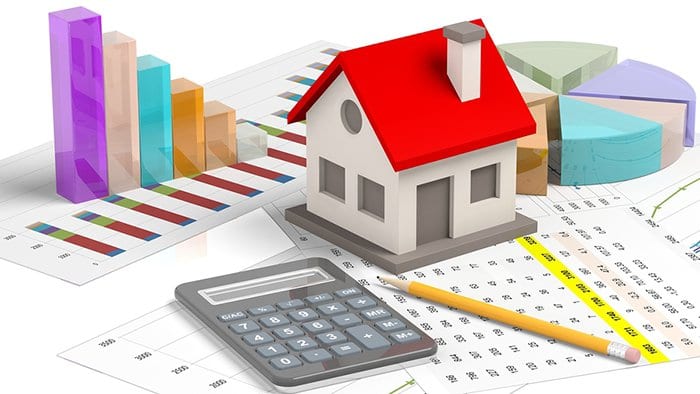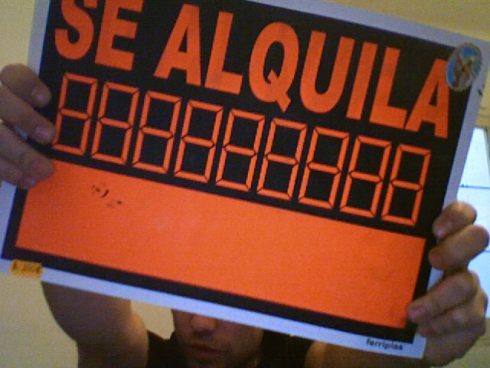THE Spanish real estate market continues to show significant strength, suggesting further growth in the coming years.
However, to see this trend requires looking at some of the figures in a broader context because of the distortions of the Covid and immediate post-Covid period.
There are also structural elements to the Spanish—and Costa del Sol—housing market, construction, and pricing that are external to it but affect it nonetheless. But let’s start with the COVID/post-COVID context.
UNDERSTANDING THE COVID/POST-COVID CONTEXT
Keeping in mind this context is key if we’re going to interpret market data properly. For example, analysts are beginning to skip the usual comparisons of current to immediately preceding years. Instead, they compare current data with years before 2020, when the COVID-19 pandemic began.

They argue that economic behaviour during 2020–2022 can be misleading, given the wild swings the pandemic and its aftermath produced.
If we make this adjustment, the picture for Spain looks very positive, especially for regions like Malaga and the Costa del Sol, where the number of foreign buyers and the luxury market offset negative factors like inflation.
THE BIG PICTURE FOR SPAIN
Let’s start with some raw figures that suggest a bleak picture of Spain’s real estate market as compared to 2022. These are worth picking apart to understand their real meaning and to see why they are incorrect.
Based on raw numbers, home sales fell by 9.7% in 2023 (10.8% for used homes, 4.8% for new homes) compared to 2022. There was also a decrease in the rise in house prices. As can be seen in the following graph, price rises declined during Covid lockdowns. They began to rise rapidly at the start of 2021 as the economy opened up and then declined through 2022.
House prices accelerate
However, these numbers are distorted by being compared with 2022. In that year, the real estate market experienced a surge of pent-up demand in the wake of the Covid-19 pandemic. To correctly position sales from 2023 in terms of overall trends, we need to look at their relationship to the last year of sales numbers prior to Covid. The last year in which there was a “normal” market. According to the same Caixa Bank report, what we find is that home sales in Spain have grown by 16.1% nationally compared to 2019.
MALAGA PROVINCE AND THE COSTA DEL SOL
What applied to the Spanish real estate market is equally evident when we look at regional statistics in Malaga province and the Costa del Sol. Just as in the rest of Spain, home sales in Malaga province have come down from the pent-up demand we saw released post-pandemic in 2022. For instance, 32,115 real estate transactions occurred between January and November 2023. In relation to 2022, that is a 17.75% decline from more than 39,000 sales in total.
That looks alarming until we compare this with pre-pandemic transactions: there were 27,710 for 2019, which means a 15.9% increase between that year and 2023. That’s more or less a 4% per annum growth rate, which is very healthy.
According to the same article in Sur in English, quoting an Idealista.com spokesperson, the decline in home sales may, in fact, be the result of a lack of supply as much as anything else:
“…the falls are not a disaster for the market, as they seem to be more related to the reduction in the supply available for sale than to a severe drop in demand. It is very likely that the next closing data for 2023 will bring the volume of transactions to just under 600,000 units and will be the second highest volume of sales since the bursting of the 2008 bubble, behind only 2022”.
As the following graph demonstrates, the picture is more complex in general. Even prior to the pandemic, in 2017, there was a peak in home sales in Malaga province. That was followed by an easing that became a substantial decline with the onset of Covid. In the month of November 2023, sales remained just above the 2017 peak. That suggests a return to a normal pattern of growth in home sales.
LUXURY HOMES: THE STRONGEST DRIVER?
As well as the overall strength of the Costa del Sol market, we also see that luxury home purchases play an outsized role here. According to a luxury Spanish housing market report by Hiscox, there were 2,500 homes for sale in 2023 with a value greater than 3 million euros in Malaga province, or 34% of the total Spanish super-luxury market. Most of these high-end homes are located in Benahavís, Estepona and Marbella, an area known as the Golden Triangle.
Foreign ultra-high net worth investors are flocking to purchase luxury villas, apartments and penthouses, drawn by Spain’s favourable climate, lifestyle, and good value compared to other prime European destinations. Prices in Spain’s luxury housing segment have surged 10–20% since 2021.
In the super-luxury range, homes in Benahavís have an average value of 6.8 million euros with an average price of 6,437 euros per square metre. In Marbella, the average is 7 million euros, with a square metre price approaching 11,000 euros. For comparison, the average price per square metre for Spain was 2,152 euros.
In general, Spain’s luxury housing market has shown remarkable resilience compared to some other European countries. The UK, for instance, has suffered significant declines in sales volumes and prices. Spain’s prime property sector, on the other hand, continues to thrive. This divergence can be attributed to several factors. Spain’s appealing lifestyle, excellent climate, and relative affordability make it an attractive proposition for wealthy buyers seeking a European base.
THE POSITIVE IMPACT OF FOREIGN BUYERS
By the end of 2023, foreigners made up a thirdof all home purchases in the Costa del Sol’s golden triangle cities. Compare that to the rest of Spain, where foreign purchases make up only 21.4%. The British continued to lead the ranking of foreign buyers, followed by Swedes, Dutch and Belgians.
Another driving factor has been world events. With the war in Ukraine, for example, Russians have vanished while the number of Ukrainians grow. Demand from buyers in conflict-ridden places like Ukraine and Israel has grown, turning Marbella into a “refugee destination”, according to José Carlos León, president of the LPA (Leading Property Agents of Spain). Some are looking for mid to high-level properties between one and three million euros.
Some speculate that the number of American homebuyers, already growing, will surge due to events at home. According to Spain’s General Council of Notaries, citizens from the USAbought more than 2,600 homes in Spain between the second half of 2022 and the first half of 2023, breaking records.
Interestingly, while Madrid was previously where American house purchases were concentrated, that is no longer the case. The favoured locations for American purchasers have shifted to Barcelona and Valencia, with the Costa del Sol, I predict, making the top 3 within the next 5 years.
PRICES AND INFLATION
As noted above, Spanish house prices—especially in coastal regions—have remained remarkably stable. In the last two years, they have grown above the rate of inflation through both the post-pandemic buying surge and the 2023 return to “normal.”
What can explain the fact that house prices in Spain rose in Q1 2024 by 7% (3.68% inflation-adjusted) compared to the previous year? Likewise, in 2023, prices rose by 8.16% (4.19% inflation-adjusted).
Several factors are at work here. One of the most important is that while prices are rising in Spain, they are doing so from a very low level. The housing crisis of 2007-2013 hit the Spanish market especially hard. It is only now reaching price levels comparable to those in 2007, 17 years ago.
House price indices
That not only means that buying even a luxury home still seems like a bargain, to foreign buyers especially. It also means that they are willing to push the price up to get the house that they want because compared to their home country, it still seems like a bargain.
A second factor, especially in coastal regions, is the sustained growth in tourism. This has made real estate purchased for tourist rentals a quality investment with solid returns. As a 2024 Caixa Bank study noted:
CaixaBank Research forecasts that the tourism sector’s GDP will grow by 2.5% in real terms in 2024, reaching a level of 7.1% above 2019. It ended 2023 with a year-on-year growth of 6.9% and exceeded the 2019 level by 4.5%.
The third factor, related to the first two, is that new construction of homes in Spain – and especially in high-demand areas like the Costa del Sol – lags demand.
“In 2023, the number of housing starts rose by 1.1% y-o-y to 98,040 units, an improvement from an annual decline of 3.5% in the prior year, based on figures from the Ministry of Development. Likewise, housing completions also increased slightly by 0.7% to 80,473 units in 2023, in contrast to a 4.9% drop in 2022.”
Trend in nominal tourism GDP
These improved numbers are a good sign, pointing towards recovery in housing construction. But with sales rising at 4% per year, the lag between supply and demand continues. A study by Idealista argues that this long-term imbalance between supply and demand is another factor creating upward pressure on prices. Part of the problem is related to inflation in the price of construction materials, which looks set to level off, according to some studies.
Regardless of whether inflation comes down, the long-term structural imbalance is likely to remain a problem. This is especially true as the government currently has no clear action plan to incentivize new construction.
There is hope that the move towards planning regime reforms in Andalusia – such as the LISTA or Marbella’s new PGOU/POU – will help alleviate this problem. But we can accept continued price rises in the short to medium term.
LOOKING AHEAD
Overall, the numbers show that the market has clearly passed through a period of readjustment from the pandemic era. The “irrational exuberance” that accompanied the reopening of the economy post-COVID couldn’t last.
Understanding that 2022 was a short-term distortion helps us to have a clear picture of the true state of the market. Given that sales remain above the pre-pandemic peak of 2017, it suggests we’re still in a solid market with high demand.
According to Pelayo Barroso, the national director of Savills Research, quoted in a recent Idealista article on the state of the real estate market, demand is higher than expected:
“Demand has evolved very positively. It is growing by approximately 10% compared to the same period last year, which was a very good year in terms of sales. However, development activity is still very much in deficit. At the beginning of the year we thought it was going to be a good year, but more in line with 2023. We are surprised by the strength of demand, above what was initially expected.”
There are some headwinds as the hangover from the post-Covid inflation surge has hindered market growth; everything from high interest rates to low construction starts. However, trends in the real estate that make Spain an attractive destination suggest that prices will remain stably growing in the coming period.








